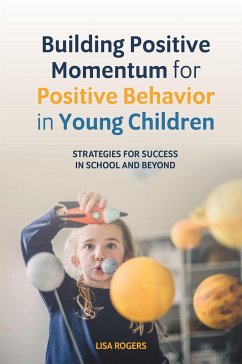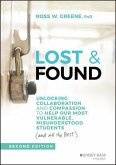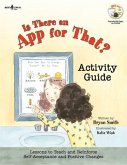Lisa Rogers
Building Positive Momentum for Positive Behavior in Young Children
Strategies for Success in School and Beyond
Versandkostenfrei innerhalb Deutschlands
31,99 €
inkl. MwSt.
Versandkostenfrei*
Liefertermin unbestimmt
Melden Sie sich
hier
hier
für den Produktalarm an, um über die Verfügbarkeit des Produkts informiert zu werden.

16 °P sammeln
Lisa Rogers
Building Positive Momentum for Positive Behavior in Young Children
Strategies for Success in School and Beyond
- Broschiertes Buch
Learn how to use positive momentum to address common behavioral issues in the classroom and beyond. The strategies in this book show how to get long-term results, with illustrative case examples and downloadable resources for tracking progress. It also offers advice for working with children with special needs.
Andere Kunden interessierten sich auch für
![Positive Behaviour Management in Primary Schools Positive Behaviour Management in Primary Schools]() Liz WilliamsPositive Behaviour Management in Primary Schools27,99 €
Liz WilliamsPositive Behaviour Management in Primary Schools27,99 €![The Teacher Toolbox for a Calm and Connected Classroom The Teacher Toolbox for a Calm and Connected Classroom]() Joanna SchwartzThe Teacher Toolbox for a Calm and Connected Classroom32,99 €
Joanna SchwartzThe Teacher Toolbox for a Calm and Connected Classroom32,99 €![Lost & Found Lost & Found]() Ross W. Greene (Harvard University)Lost & Found31,99 €
Ross W. Greene (Harvard University)Lost & Found31,99 €![Implementing Restorative Practices in Schools Implementing Restorative Practices in Schools]() Margaret ThorsborneImplementing Restorative Practices in Schools43,99 €
Margaret ThorsborneImplementing Restorative Practices in Schools43,99 €![Lost & Found Lost & Found]() Ross W. Greene (Harvard University)Lost & Found25,99 €
Ross W. Greene (Harvard University)Lost & Found25,99 €![Is There an App for That? Activity Guide Is There an App for That? Activity Guide]() Bryan SmithIs There an App for That? Activity Guide15,99 €
Bryan SmithIs There an App for That? Activity Guide15,99 €![Helping Children to Manage Stress Helping Children to Manage Stress]() Deborah PlummerHelping Children to Manage Stress28,99 €
Deborah PlummerHelping Children to Manage Stress28,99 €-
-
-
Learn how to use positive momentum to address common behavioral issues in the classroom and beyond. The strategies in this book show how to get long-term results, with illustrative case examples and downloadable resources for tracking progress. It also offers advice for working with children with special needs.
Produktdetails
- Produktdetails
- Verlag: Kingsley
- Seitenzahl: 192
- Erscheinungstermin: 18. Januar 2018
- Englisch
- Abmessung: 190mm x 126mm x 17mm
- Gewicht: 285g
- ISBN-13: 9781785927744
- ISBN-10: 1785927744
- Artikelnr.: 48925737
- Herstellerkennzeichnung
- Libri GmbH
- Europaallee 1
- 36244 Bad Hersfeld
- gpsr@libri.de
- Verlag: Kingsley
- Seitenzahl: 192
- Erscheinungstermin: 18. Januar 2018
- Englisch
- Abmessung: 190mm x 126mm x 17mm
- Gewicht: 285g
- ISBN-13: 9781785927744
- ISBN-10: 1785927744
- Artikelnr.: 48925737
- Herstellerkennzeichnung
- Libri GmbH
- Europaallee 1
- 36244 Bad Hersfeld
- gpsr@libri.de
Lisa Rogers is Director of Educating Diverse Learners in San Antonia, Texas, working with educators, students and their families by way of consultation, classroom support and training across the United States.
1. Introduction. 1.1. Priming. 1.2. Applied Behavioral Analysis. 1.3. The
Science of Early Childhood Development. 1.4. Pre-Assessment. 2. Layers of
Prevention. 2.1. Model Positive Behaviors. 2.2. Develop Authentic
Relationships. 2.3. Set Clear Expectations. 2.4. Teach Expectations. 2.5.
Provide Positive Feedback. 2.6. Build and Organized Environment. 2.7.
Nurture Problem Solving. 2.8. Teach Self-regulation. 2.9. Collaborate with
Families. 2.10. Collect and Analyze Data. 3. Building Positive Momentum.
3.1. Getting out of Seat. 3.2. Tattling. 3.3. Blurting Out. 3.4. Work
Avoidance. 3.5. Difficulty with Transitions. 3.6. Mine-Mine-Mine. 3.7. Body
Awareness. 3.8. Rough Play. 3.9. Screaming. 3.10. Aggression. 3.11.
Following Directions. 3.12. "But That's Not Fair". 4. Children with Special
Needs. 4.1. Antiseptic Bouncing. 4.2. Schedules. 4.3. Visual Supports. 4.4.
Narratives. 4.5. Video Modeling. 4.6. Communication. 4.7. Preventing
Meltdowns. References.
Science of Early Childhood Development. 1.4. Pre-Assessment. 2. Layers of
Prevention. 2.1. Model Positive Behaviors. 2.2. Develop Authentic
Relationships. 2.3. Set Clear Expectations. 2.4. Teach Expectations. 2.5.
Provide Positive Feedback. 2.6. Build and Organized Environment. 2.7.
Nurture Problem Solving. 2.8. Teach Self-regulation. 2.9. Collaborate with
Families. 2.10. Collect and Analyze Data. 3. Building Positive Momentum.
3.1. Getting out of Seat. 3.2. Tattling. 3.3. Blurting Out. 3.4. Work
Avoidance. 3.5. Difficulty with Transitions. 3.6. Mine-Mine-Mine. 3.7. Body
Awareness. 3.8. Rough Play. 3.9. Screaming. 3.10. Aggression. 3.11.
Following Directions. 3.12. "But That's Not Fair". 4. Children with Special
Needs. 4.1. Antiseptic Bouncing. 4.2. Schedules. 4.3. Visual Supports. 4.4.
Narratives. 4.5. Video Modeling. 4.6. Communication. 4.7. Preventing
Meltdowns. References.
1. Introduction. 1.1. Priming. 1.2. Applied Behavioral Analysis. 1.3. The
Science of Early Childhood Development. 1.4. Pre-Assessment. 2. Layers of
Prevention. 2.1. Model Positive Behaviors. 2.2. Develop Authentic
Relationships. 2.3. Set Clear Expectations. 2.4. Teach Expectations. 2.5.
Provide Positive Feedback. 2.6. Build and Organized Environment. 2.7.
Nurture Problem Solving. 2.8. Teach Self-regulation. 2.9. Collaborate with
Families. 2.10. Collect and Analyze Data. 3. Building Positive Momentum.
3.1. Getting out of Seat. 3.2. Tattling. 3.3. Blurting Out. 3.4. Work
Avoidance. 3.5. Difficulty with Transitions. 3.6. Mine-Mine-Mine. 3.7. Body
Awareness. 3.8. Rough Play. 3.9. Screaming. 3.10. Aggression. 3.11.
Following Directions. 3.12. "But That's Not Fair". 4. Children with Special
Needs. 4.1. Antiseptic Bouncing. 4.2. Schedules. 4.3. Visual Supports. 4.4.
Narratives. 4.5. Video Modeling. 4.6. Communication. 4.7. Preventing
Meltdowns. References.
Science of Early Childhood Development. 1.4. Pre-Assessment. 2. Layers of
Prevention. 2.1. Model Positive Behaviors. 2.2. Develop Authentic
Relationships. 2.3. Set Clear Expectations. 2.4. Teach Expectations. 2.5.
Provide Positive Feedback. 2.6. Build and Organized Environment. 2.7.
Nurture Problem Solving. 2.8. Teach Self-regulation. 2.9. Collaborate with
Families. 2.10. Collect and Analyze Data. 3. Building Positive Momentum.
3.1. Getting out of Seat. 3.2. Tattling. 3.3. Blurting Out. 3.4. Work
Avoidance. 3.5. Difficulty with Transitions. 3.6. Mine-Mine-Mine. 3.7. Body
Awareness. 3.8. Rough Play. 3.9. Screaming. 3.10. Aggression. 3.11.
Following Directions. 3.12. "But That's Not Fair". 4. Children with Special
Needs. 4.1. Antiseptic Bouncing. 4.2. Schedules. 4.3. Visual Supports. 4.4.
Narratives. 4.5. Video Modeling. 4.6. Communication. 4.7. Preventing
Meltdowns. References.







